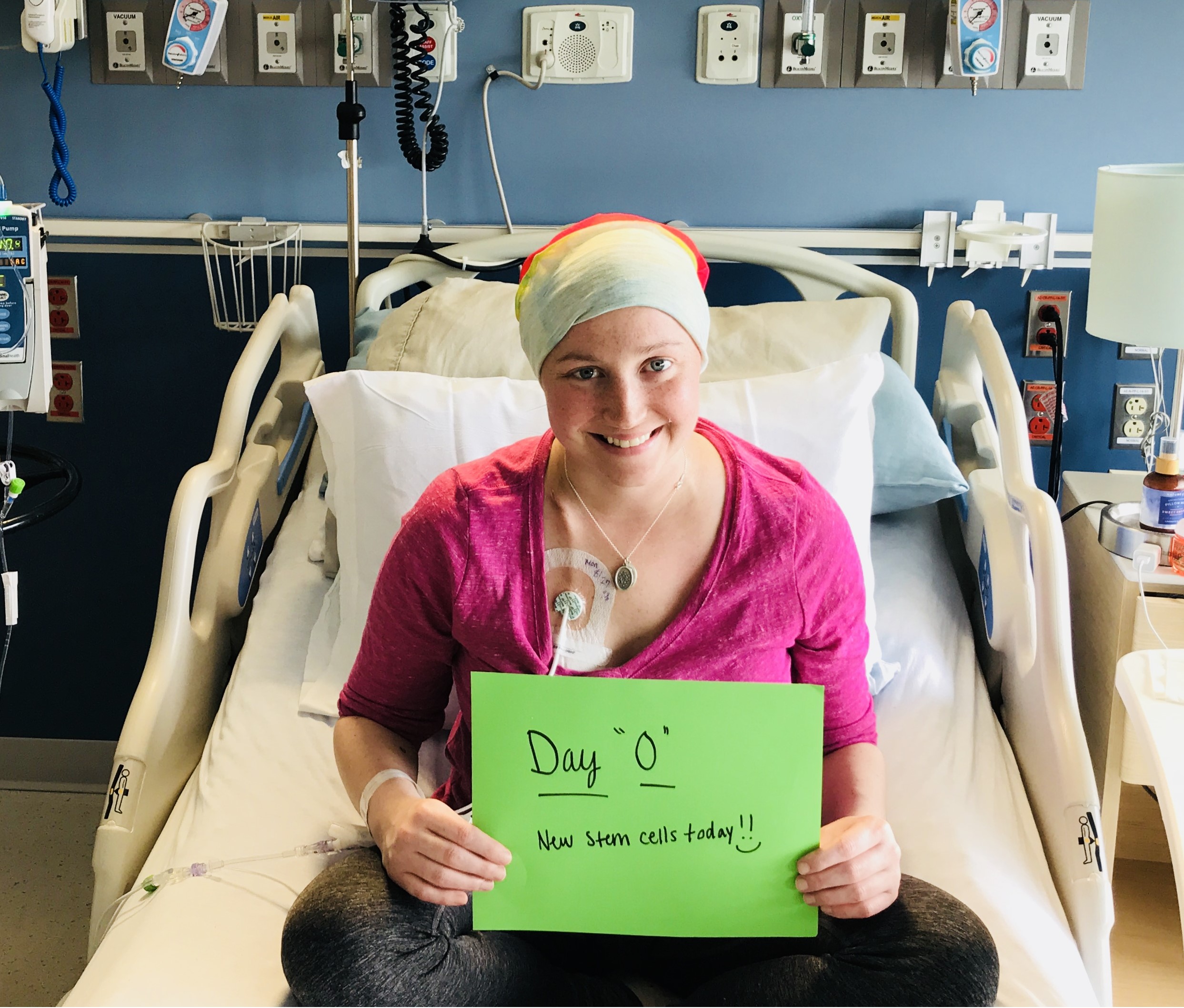Inspirational Stories
Amy
non-Hodgkin lymphoma (NHL)
I am a stage IV non-Hodgkin lymphoma survivor (NHL). The diagnosis came as a complete shock since I was a relatively healthy, active young adult working and enjoying life with family and friends. With a family history of breast cancer, I was advised to start having screening mammograms in my 20s. After a few clear screenings, I approached my 2018 screening and annual health visit to my primary care doctor's office with optimism. Within 48 hours, I received the dreaded call many women fear ― abnormal results. I did not immediately jump to the worst-case scenario, but worries started to flood my mind as I felt increasingly sore from the mammogram, and the lymph nodes under my arms began to swell. I also began to experience some difficulty swallowing but attributed that at the time to the mounting anxiety from the situation. I started to feel off and increasingly unwell with a string of symptoms that followed.
That mammogram would end up saving my life.
A ripple effect of an ultrasound, breast MRI, and breast and axillary lymph node biopsies followed. However, it did not appear to be breast cancer as we originally suspected. The MRI showed a very large, enhancing mass in my chest, and I was ultimately diagnosed with stage IV T-cell lymphoblastic lymphoma (T-LBL) three weeks later. I was hospitalized the next day for a one-month stay to begin my first phase of treatment which included several rounds of chemotherapy, high-dose steroids, and chemotherapy administered in my spinal fluid. Shortly after my first phase of treatment, I was so relieved and thankful to receive the news that my biopsy and scans were showing no evidence of disease. However, given the rarity and complex nature of my cancer, it was recommended I have an allogeneic stem cell transplant for my best chance at long-term survival. I am beyond thankful that one of my younger brothers was a 10/10 donor match and graciously donated his stem cells to give me a second chance at life. I am forever grateful for him.
After many more tests, outpatient chemotherapy four days a week, and an intense conditioning regimen, I received my life-saving stem cell transplant on August 28, 2018. I returned home a month later to journey the long path to recovery.
I am beyond thankful to be in remission from my disease and to celebrate each year of my transplant "birthday." That said, while lying awake in the hospital one night, I thought about what I could do to bring meaning to this difficult experience. I kept thinking about the other patients and their families I briefly saw while walking through a very isolated and seemingly desolate hematology/oncology unit. I wanted to know how they were doing and what they were experiencing in their respective cancer journeys. As I recovered and regained my strength, I came across The Leukemia & Lymphoma Society (LLS) and all the opportunities to do what I envisioned ― connecting with others surviving cancer.
Being a volunteer with LLS is another silver lining from my own cancer journey that has allowed me to do just that by connecting with others through the First Connection Program and the many other wonderful opportunities available for volunteers. Facing a cancer diagnosis and intensive treatment plan can be very isolating, both physically and mentally, which can be a very lonely experience for many. It can be quite curative for the soul to connect over shared experiences navigating cancer which can broaden a window of hope for someone surviving the ups and downs of their own diagnosis. It is incredibly meaningful to share my experience and listen to others; there is always something to learn from each other and always an opportunity to find gratitude in each healthy day. I am so grateful for LLS and each opportunity that has come my way as a volunteer for an organization that truly prioritizes people and a world with less prevalent blood cancer.
